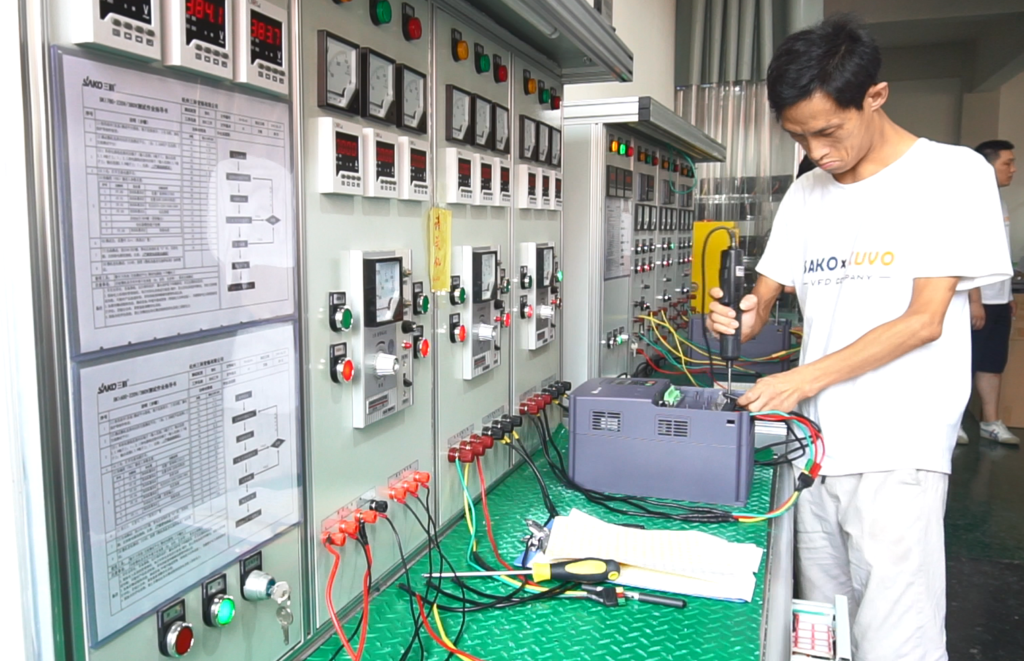The green environmental protection industry is a field that I hold close to my heart. It is an essential component in our battle against climate change and environmental degradation. Every effort made in this sector counts towards a more sustainable future for us and for the generations to come. A significant contributor to this industry's success is the use of modern technologies, one of which is the frequency converter.
Variable Frequency Drives play a pivotal role in the green environmental protection industry by optimizing energy usage and thus reducing carbon emissions. For instance, these devices can adjust the speed of electric motors to match the actual load, preventing unnecessary energy uses and minimizing the environmental impact.
Now, why is this important? It is important because the efforts made today in the green environmental protection industry will determine the quality of life for future generations.
How Are Frequency Converter Essential for Green Environmental Protection?
Green environmental protection is crucial for several reasons - it helps safeguard our ecosystems, minimize environmental pollution, save energy and resources, alleviate the impacts of climate change, and foster sustainable growth.
It is only by committing to environmental protection that we can hope to live in harmony with nature and achieve sustainable development. A key player in this effort is the frequency conversion speed regulation function, which plays a vital role in both environmental protection and energy conservation. Let's take a closer look at some of the essential roles it plays in these areas:

Energy Saving and Consumption Reduction
The primary role of the frequency conversion speed regulation function is to adjust the motor speed according to the actual load demand, ensuring that it operates at the optimal working point. Running a motor at high speed or full load continuously results in significant energy wastage and increased power consumption of the equipment. However, by reducing the motor speed to adjust the flow and pressure, the frequency conversion speed regulation function effectively reduces energy waste and equipment power consumption. This not only leads to cost savings but also contributes to the global effort to reduce energy consumption and combat climate change.
Precise Control
Another crucial advantage of the frequency conversion speed regulation function is its ability to precisely control the equipment's flow, pressure, speed, and other parameters. Traditional valve control methods often lead to energy loss and instability in the operation of the equipment. However, by adjusting the motor speed, the frequency conversion speed regulation function enables precise flow and pressure control, thereby avoiding these issues. This results in more efficient operation of the equipment, further contributing to energy conservation.

Soft Start and Overload Protection
The frequency conversion speed regulation function also facilitates the soft start of the motor, preventing the impact current from damaging the equipment when the motor starts. Additionally, the frequency converter provides overload protection. When the motor load is too large, it automatically reduces the motor speed to avoid motor overload damage, thereby enhancing the equipment's reliability and safety. This feature is particularly important for extending the lifespan of the equipment and avoiding costly repairs or replacements.
Noise and Vibration Reduction
Lastly, the frequency conversion speed regulation function contributes to reducing the equipment's noise and vibration by adjusting the motor speed. Traditional fixed-speed equipment often generates considerable noise and vibration during operation, which can be detrimental to the working environment and the well-being of the workers. However, by using a frequency converter to adjust the speed, it is possible to reduce noise and vibration during low-load operation, thereby improving the comfort of the working environment.
How Do VFDs Contribute to Energy Efficiency?
Frequency converter are devices that convert electrical power from one frequency to another. They are commonly used to control the speed of electric motors, which, in turn, governs the operation of various machinery and equipment. By precisely controlling the speed of motors, frequency converter enable machinery to operate more efficiently, consuming only the necessary amount of energy.

A key benefit of using frequency converter is their ability to optimize energy consumption. For example, a pump or a fan running at full speed all the time consumes more energy than needed. A frequency converter can adjust the speed of the motor to match the actual demand, thereby reducing energy consumption. According to a study conducted by many research, using frequency converters can lead to energy savings of up to 30%.
Can VFDs Reduce Carbon Emissions?
Absolutely, by optimizing energy uses, frequency converter contribute to reducing carbon emissions. Energy production is one of the major sources of carbon emissions worldwide. Therefore, using energy more efficiently translates to lower carbon emissions.
After my study, using frequency converter , industries can reduce their carbon emissions by up to 20%. This is a significant contribution to the global effort to combat climate change.
Are Frequency Converter Cost-Effective?
Investing in frequency converter may seem like a considerable expense initially, but it is important to consider the long-term benefits. By optimizing energy consumption, frequency converter can lead to significant cost savings on electricity bills. Moreover, they also contribute to extending the lifespan of machinery by preventing wear and tear caused by running at full speed continuously.
The investment in frequency converters can be recovered within two to three years through energy savings. After that, the savings directly contribute to the bottom line.
How Can Industries Implement Frequency Converter?
Implementing frequency converters is a straightforward process. It starts with an assessment of the existing machinery and equipment to determine the suitability and potential benefits of using frequency converters. Once the assessment is complete, the appropriate frequency converters can be selected and installed.
At SAKO, we offer a wide range of frequency converters suitable for various applications. Our team of experts can help you assess your needs and select the most appropriate solution.

The Role of Solar Pump Inverters in Green Environmental Protection
Solar pump inverters are a special type of frequency converters designed specifically for solar-powered pumping systems. These devices convert the direct current (DC) produced by solar panels into alternating current (AC) required by the pump's motor. By doing so, solar pump inverters enable the use of solar energy to power water pumps, which is a more environmentally friendly alternative to conventional energy sources.

Using solar energy for water pumping has several advantages. First, it reduces the reliance on fossil fuels, which are a major source of carbon emissions. Second, it promotes the use of renewable energy, which is abundant and free. Lastly, it reduces the operational costs associated with water pumping, as solar energy is free once the initial investment is recovered.
In addition, solar pump inverters often come with Maximum Power Point Tracking (MPPT) technology. This feature optimizes the performance of the pumping system by ensuring that the motor operates at the most efficient point of the solar panels' power curve. Using a solar pump inverter with MPPT technology can lead to energy savings of up to 25%.
